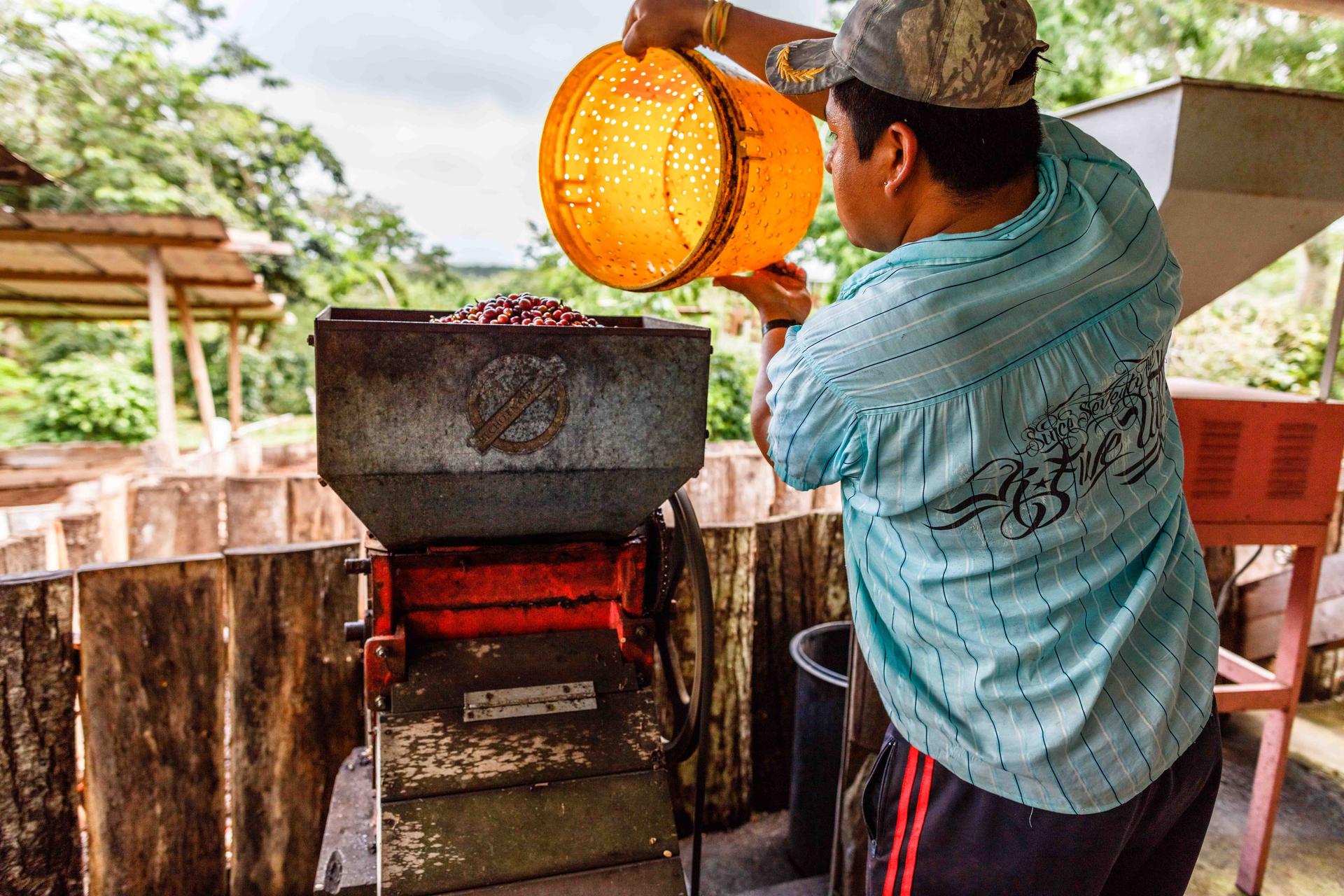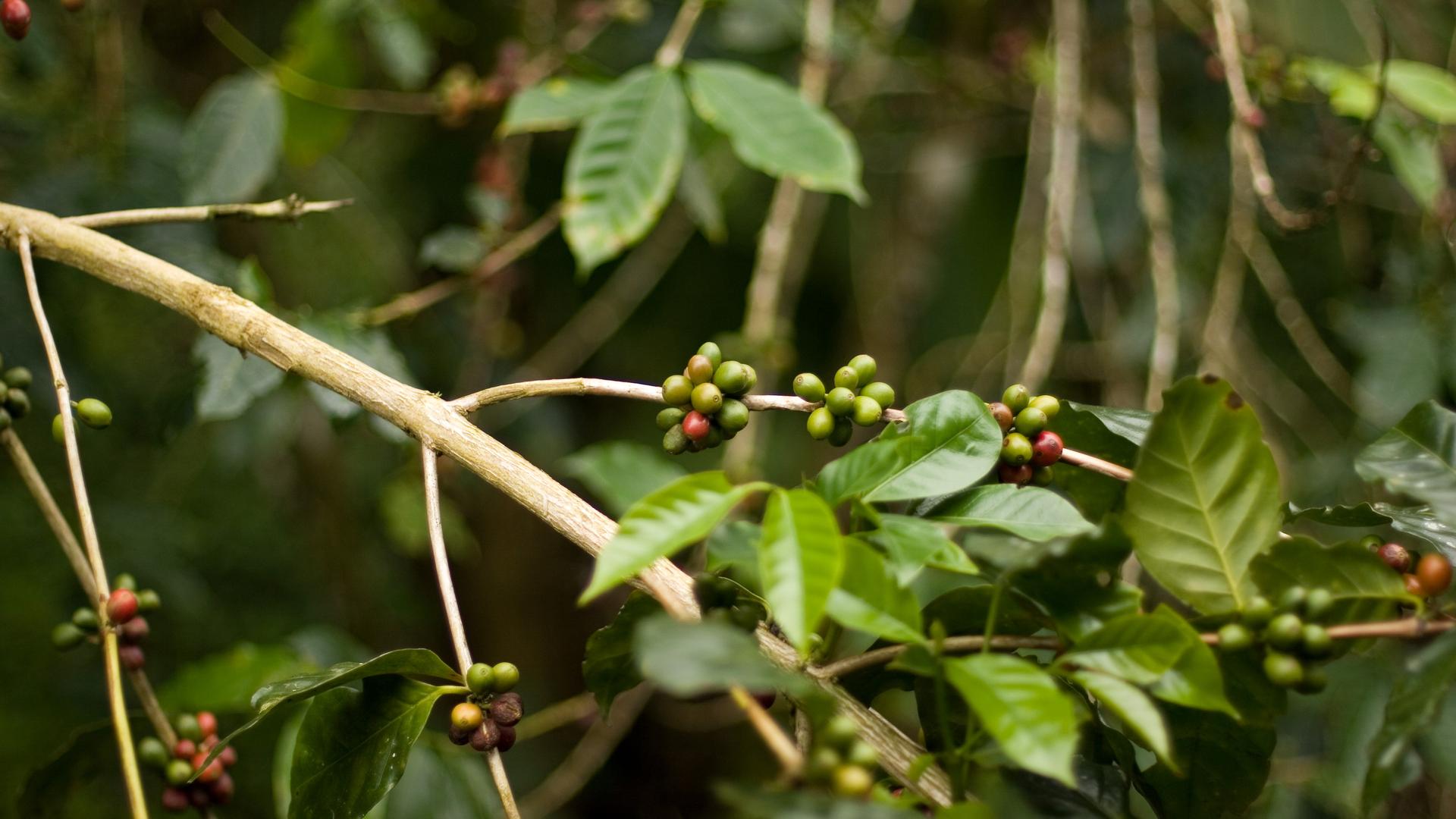Humans are damaging the fragile Galapagos ecosystem. Maybe coffee can help save it.
Conservationists hope building a market for local, shade-grown coffee could help restore vital but degraded scalesia forests on Santa Cruz Island, in the Galapagos.
No one comes to the Galapagos Islands for coffee. But Scott Henderson is hoping to change that.
There are no giant tortoises around his farm in the highlands of Santa Cruz, the most popular of the islands. No marine iguanas or blue footed boobies. Just Henderson and his ripe red coffee beans.
His farm, calledLava Java, is the soup to nuts operation of gourmet coffee. He grows the beans, picks and husks them, soaks them to ferment off the sugars, dries and roasts them, and then sells them to foreign visitors craving more than a glimpse of the islands’ famous wildlife.
“The whole coffee idea was to find a way to tap into these 200,000 high-end Starbucks addicts out in the bay on these nice boats and five-star hotels,” Henderson says.
But he and his wife, Maria Elena Guerra, aren’t aiming to become coffee barons. They came to the Galapagos 25 years ago as conservationists. And their farm is actually more about trees than coffee.
In particular, a species of tree called scalesia, native to the Galapagos, but largely wiped out since the arrival of humans.
“Probably at one time there were hundreds, thousands — who knows, lots and lots of these trees at this elevation,” Henderson says of the highlands region. He and his wife originally bought their farm in part to restore the scalesia forest.
“They are one of the most important species,” Henderson says. “So many of the birds and the insects that are the foundation of the Galapagos ecosystem depended for some part of their life cycle on that tree. So that’s why we went on and planted a couple thousand of them.”
And the couple realized that coffee might be the cash crop they needed to finance their restoration dream.
“We may not have a perfect, restored Galapagos highland ecosystem, but we’ve got all the elements of it,” Henderson says. “And what pays for that to happen is coffee.”

Shade-grown coffee can fetch premium prices because it can cut the use of unsustainable farming practices. It has become the coffee you drink if you care about the planet’s health and can afford to pay a little more.
And then there are benefits to the local ecosystem, which trickle down to its most humble creatures, including a species of moth that feeds only on the scalesia.
Without the trees, the moths disappear, which has a knock-on effect through the islands. The government is so worried that it has a plan to reforest scalesia across the islands by 2050.
Henderson’s plan is giving that effort a head start.

It may seem idealistic to think an American expat and his Ecuadorean wife could restore a Galapagos ecosystem, but local biologist Heinke Jagar of the Charles Darwin Foundation says they’re kind of doing it.
“It’s a good example of what would work as a model for other farmers,” Jagar says.
So far, many other locals seem to like the idea too.
“We protect the forest,” says Paul Salinas, who buys beans from Lava Java and other local growers for his shop OMG Coffee, one of the high-end cafes near the Santa Cruz harbor. “We inspire [other] little farms to stop using diesel, so they are moving [to] solar, some of them. … So we are generating change."
They’re also generating something new — a one of a kind product grown in the islands’ cold ocean air, volcanic landscape and scalesia forests.
Salinas says the flavor of Galapagos coffee is unique.
But just how good is a shade-grown, ecosystem-restoring Galapagos brew? You’ll have to go there to find out.
Of course you’ve always wanted to see the blue footed boobies, right?
The World is an independent newsroom. We’re not funded by billionaires; instead, we rely on readers and listeners like you. As a listener, you’re a crucial part of our team and our global community. Your support is vital to running our nonprofit newsroom, and we can’t do this work without you. Will you support The World with a gift today? Donations made between now and Dec. 31 will be matched 1:1. Thanks for investing in our work!
